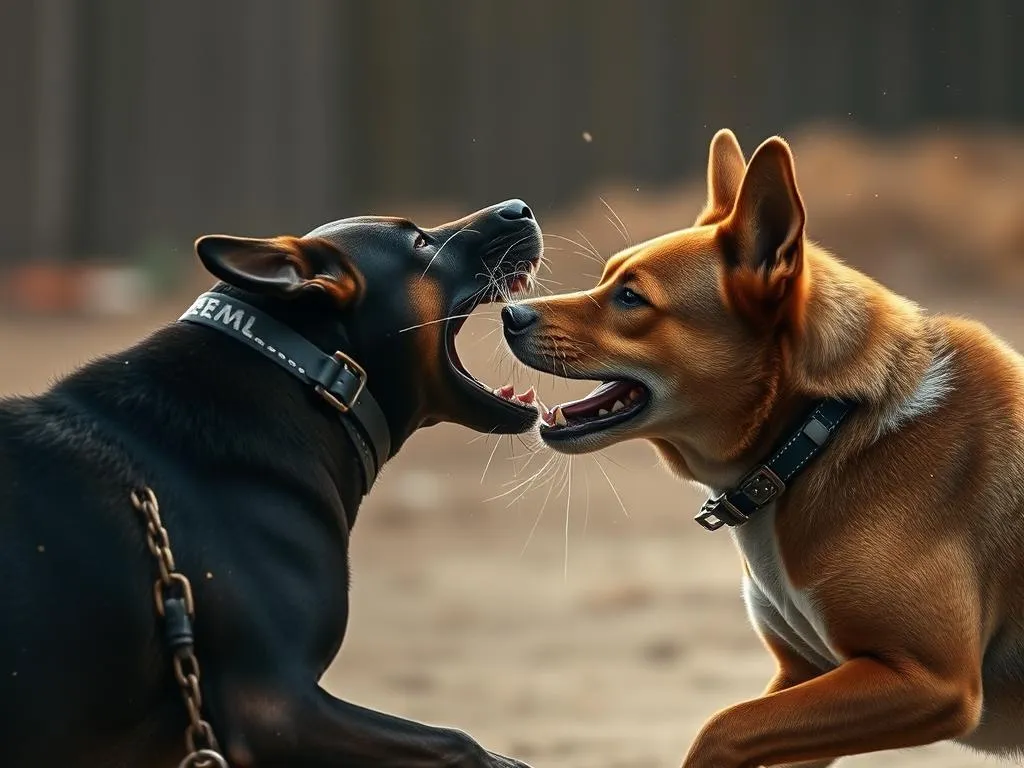
Introduction
Dogfighting incidents can occur without warning, often leaving pet owners feeling helpless and frightened. According to various studies, aggressive encounters between dogs are more common than many people realize, with reports indicating that approximately 1 in 3 dog owners have experienced a dogfight at some point. Understanding how to intervene safely in such situations is crucial, not only for personal safety but also for the well-being of the dogs involved.
This article aims to provide actionable tips and methods on how to break up a dogfight without getting hurt. We will emphasize the importance of safety for both humans and dogs during intervention, ensuring that your actions can lead to a resolution rather than exacerbating the situation.
Understanding Dog Behavior
Signs of Aggression in Dogs
Recognizing the signs of aggression in dogs is the first step in preventing or de-escalating a potential fight. Common indicators include:
- Body Language: Aggressive dogs may exhibit stiff postures, raised hackles, bared teeth, and intense stares. Growling and barking can also signal a dog’s discomfort or readiness to engage.
- Contextual Triggers: Understanding the environment and what led to the aggression can be critical. Factors such as the presence of unfamiliar dogs, loud noises, or sudden movements can trigger fights.
Common Reasons for Dogfights
Several factors can lead to aggressive behavior among dogs, including:
- Territorial Disputes: Dogs can become protective of their home or personal space, leading to confrontations with other dogs.
- Resource Guarding: Dogs may fight over food, toys, or attention from their owners.
- Fear and Anxiety: A fearful dog may lash out when it feels threatened, which can escalate into a fight with another dog.
Understanding these triggers can help you anticipate potential conflicts and act accordingly.
The Risks of Intervening in a Dogfight
Potential Dangers to Humans
Intervening in a dogfight can pose several risks to humans. These include:
- Risk of Bites and Injuries: In the heat of the moment, even the most well-meaning dog owner can inadvertently become a target for bites, especially if they try to physically separate the dogs.
- Emotional Trauma: Witnessing aggression can be distressing not only for the dogs but also for the humans involved, potentially leading to long-lasting emotional impacts.
Consequences for Dogs
The aftermath of a dogfight can be equally concerning for the dogs involved:
- Physical Injuries: Dogs can suffer from cuts, puncture wounds, or more severe injuries during fights.
- Behavioral Repercussions: A dog that has experienced a fight may become more anxious or aggressive in the future, requiring additional training and support.
Understanding these risks can help you approach any intervention with caution and preparation.
Preparing for Intervention
Assessing the Situation
Before attempting to intervene in a dogfight, it is essential to assess the situation carefully:
- Evaluating Severity: Determine how serious the fight is. If the dogs are just posturing and barking, it may be possible to intervene with minimal risk. However, if the fight is intense, it might be best to wait for help.
- Considering the Environment: Take note of your surroundings. Are there bystanders present? Is there enough space for you to maneuver safely?
Gathering Tools and Resources
Having the right tools at your disposal can make a significant difference in how effectively you can intervene:
- Items That Can Help: Bring along leashes, spray bottles filled with water, or blankets to safely distract or separate the dogs.
- Emergency Services: Always have a phone handy in case the situation escalates and you need to call for animal control or veterinary assistance.
Preparation is key to ensuring a safe and effective intervention.
Techniques to Break Up a Dogfight Safely
Verbal Commands
Using verbal commands can redirect the dogs’ attention away from each other:
- Firm, Authoritative Voice: Speak loudly and clearly to command the dogs’ focus. Phrases like “Leave it!” or “Come!” can work effectively if the dogs are somewhat trained.
- Clarity and Consistency: Ensure that your commands are clear and consistent to avoid confusion.
Distraction Methods
Sometimes, all it takes to break up a fight is a distraction:
- Noise Distractions: Shouting, clapping, or using a whistle can startle the dogs and redirect their focus.
- Use of Objects: Tossing a toy or some food away from the fight can divert their attention and encourage them to break apart.
Physical Intervention Techniques
If verbal commands and distractions fail, you may need to physically intervene:
- The “Wheelbarrow Technique”: This involves lifting the hind legs of a dog off the ground, which can effectively disable its ability to fight while also minimizing the risk of bites.
- Using Barriers: If possible, use furniture or portable dog gates to create a barrier between the fighting dogs.
Creating Distance Between Dogs
Establishing a safe distance between the dogs is crucial:
- Safely Separate Dogs Using Leashes: If the dogs are leashed, gently pull them apart while ensuring you maintain a safe distance to avoid being bitten.
- Importance of Distance: Keeping a safe distance helps prevent further escalation of aggression and protects you from potential harm.
After the Fight: What to Do
Assessing Injuries
Once the fight is broken up, it’s vital to assess both dogs for injuries:
- Checking for Signs of Injury: Look for cuts, bruises, or signs of distress in both animals.
- When to Seek Veterinary Help: If either dog appears injured or is behaving unusually, do not hesitate to contact a veterinarian for advice.
Calming the Dogs
Helping both dogs calm down is crucial after a fight:
- Techniques to Soothe Animals: Speak softly and reassuringly to both dogs. Gentle petting can help ease their anxiety.
- Creating a Safe Space: Provide a quiet area for the dogs to recover away from distractions and potential triggers.
Assessing the Situation
After the immediate situation has stabilized, it’s essential to assess what led to the fight:
- Understanding Triggers: Take note of what caused the aggression to prevent future incidents.
- Behavioral Training: Consider enrolling the dogs in training classes to improve their socialization and reduce aggressive tendencies.
Preventative Measures
Training and Socialization
Preventing dogfights begins with proper training and socialization:
- Importance of Early Socialization: Introducing puppies to various environments, people, and other dogs can help them develop positive behaviors.
- Resources for Dog Training Classes: Look for local training classes that focus on obedience and socialization.
Creating a Safe Environment
Ensuring a safe home environment can minimize the risk of dogfights:
- Dog-Proofing Your Home and Yard: Secure your property by removing hazards and ensuring that fences are tall and sturdy.
- Tips for Managing Interactions: Always supervise dog interactions, especially in public spaces or around other unfamiliar dogs.
Conclusion
In summary, understanding dog behavior and employing safe intervention techniques is crucial for anyone who owns or interacts with dogs. Remember, knowing how to break up a dogfight without getting hurt involves recognizing the signs of aggression, preparing for intervention, and using effective techniques to separate the dogs safely.
Always prioritize the safety of both yourself and the dogs involved. By being informed and proactive, you can help create a safer environment for your furry friends. Share this knowledge with fellow dog owners to foster a community dedicated to responsible pet ownership and safe interactions.









